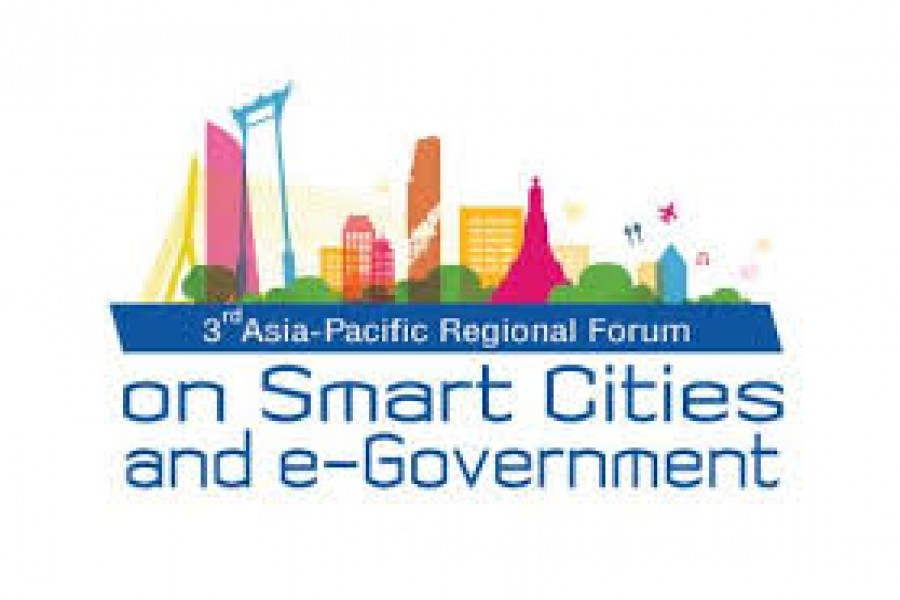The continuous rise in urbanization for decades has increased the global urban population from a mere 751 million in 1950 to 4.2 billion in 2018. According to the 2018 Revision of World Urbanization Prospects produced by the Population Division of the UN Department of Economic and Social Affairs (UN DESA), this number is expected to increase to 6.7 billion (68% of the total population) by 2050.
Accommodating and facilitating such a large number of citizens is a challenge for even the most modern and advanced cities. However, increasingly, it is becoming clear that the long-term investment pays off - not just in terms of citizen satisfaction but in monetary terms as well.
Rising return
According to new research “Building a Hyperconnected City” by Oracle and economic and urban research consultancy, ESI ThoughtLab , as cities become more interlinked, their ROI (return on investment) grows: cities are starting to realize a return of 1.8 percent for implementers and 2.6 percent for advancers, while hyper-connected leaders see a 5.0 percent boost. That can translate into enormous returns ranging from $19.6 million for implementers to $40.0 million for advancers and $83 million for hyper-connected leaders. Simply being a smart city is not enough. They need to transform into hyper-connected urban centers to achieve more significant benefits in the realm of economics, business and social.
Relying on a Strategic Vision
This means that city leaders need to have a strategy that revolves around four key pillars of city transformation: technology, data and analytics, cybersecurity, and connected citizens. They also need to keep abreast of rapid latest technological advances such as artificial intelligence (AI), blockchain, or virtual and augmented reality to come up with innovative solutions. Adoption of the latest innovations in technology has played a vital role in helping cities move from isolated to integrated departments, undergoing transformational changes as they look for modern ways to solve new challenges cities face today. Reimagine and Reconnect Indeed, smart cities use the full raft of new technologies—including the Internet of Things (IoT), machine learning, and analytics—to reimagine what they might look like, and reinvent how people live. From governments, citizens, and streets to transportation, power, and sanitation, every process and object can be connected, with that data captured and analyzed. Using the insights that these connected systems provide, smart governments gain the unprecedented power to improve citizen experiences, as well as become more attractive to visitors and businesses An example in this regard is San Joaquin County in California. It is using powerful cloud analytics technologies as the foundation of their smart government innovation, enabling the county to deliver data-driven citizen services and engagement with maximum impact. Entities throughout the county, such as hospitals, law enforcement, transportation, and public works, now collaborate more effectively and are better equipped to meet the health, social, safety and economic needs of their constituents. Data-driven improvement As they seek to use their resources efficiently, bothshort-and long-term planning, and investmentsare needed. Only by doing this will they be able to move from places where people live and work, to be citizen-centric communities whereby data is used for continuous operational improvement, responsive and reliable engagement, and for things like the improved ability to predict for and remediate urgent issues. The most successful city leaders realize that data is at the core of successful smart city innovation. To become truly ‘smart’, they must have an infrastructure in place that powers the extraction, integration, and analysis of all this data to glean the insights needed to enhance everything from citizen services to building projects. However, harnessing this proliferation of data, and bringing together all of the parties involved is likely to be quite some task. Undoubtedly, the critical asset to success, data, will sit in different applications, in different systems, both on-premises and across different clouds.
Technological Paradigm Shift
At a technology level, new approaches will likely be needed to bring this data-driven future to reality. It will require hybrid cloud, and multi-cloud deployments, as well as new models such as ‘Cloud Adjacent Architectures’, that give the elasticity of the cloud with the processing power of on-premises IT to those not yet willing or able to consider using the public cloud. This combined with Smart City solutions will transform the ways cities can harness and process the power of data. It will drive the integration of modern digital technologies and channels via a platform that integrates technologies spanning cloud, digital outreach, Omnichannel service, case management, mobility, social, IoT, blockchain, and AI while helping ensure comprehensive security and information privacy.
Additionally, from an organizational perspective, changes like appointing a Chief Citizen Experience Officer need to be considered to ensure a thoughtful, proactive response to all their constituents. Only by driving changes like these will cities be able to remove some of the core drawbacks of data complexity, become hyper-connected, helping bring a more rapid roll-out of projects that could make a significant difference to all our lives. A citizen-first approach Most importantly, emerging technologies hold great promise for more effective urban solutions. From smart grids, smart waste management to real-time traffic management, disruptive technologies such as AI, IoT and blockchain will enable our future smart cities to become sustainable and inclusive, while operating effectively with a citizen-first approach. Sustainable smart cities enable progress when the integration of technology is directed into a strategic approach to sustainable development (energy efficiency, pollution, resources), the well-being of citizens (healthcare, public safety, social care) and economic development (jobs, investment, innovation).
(The writer is the Senior Vice President, Systems, EMEA & JAPAC Chung Heng Han [email protected])


